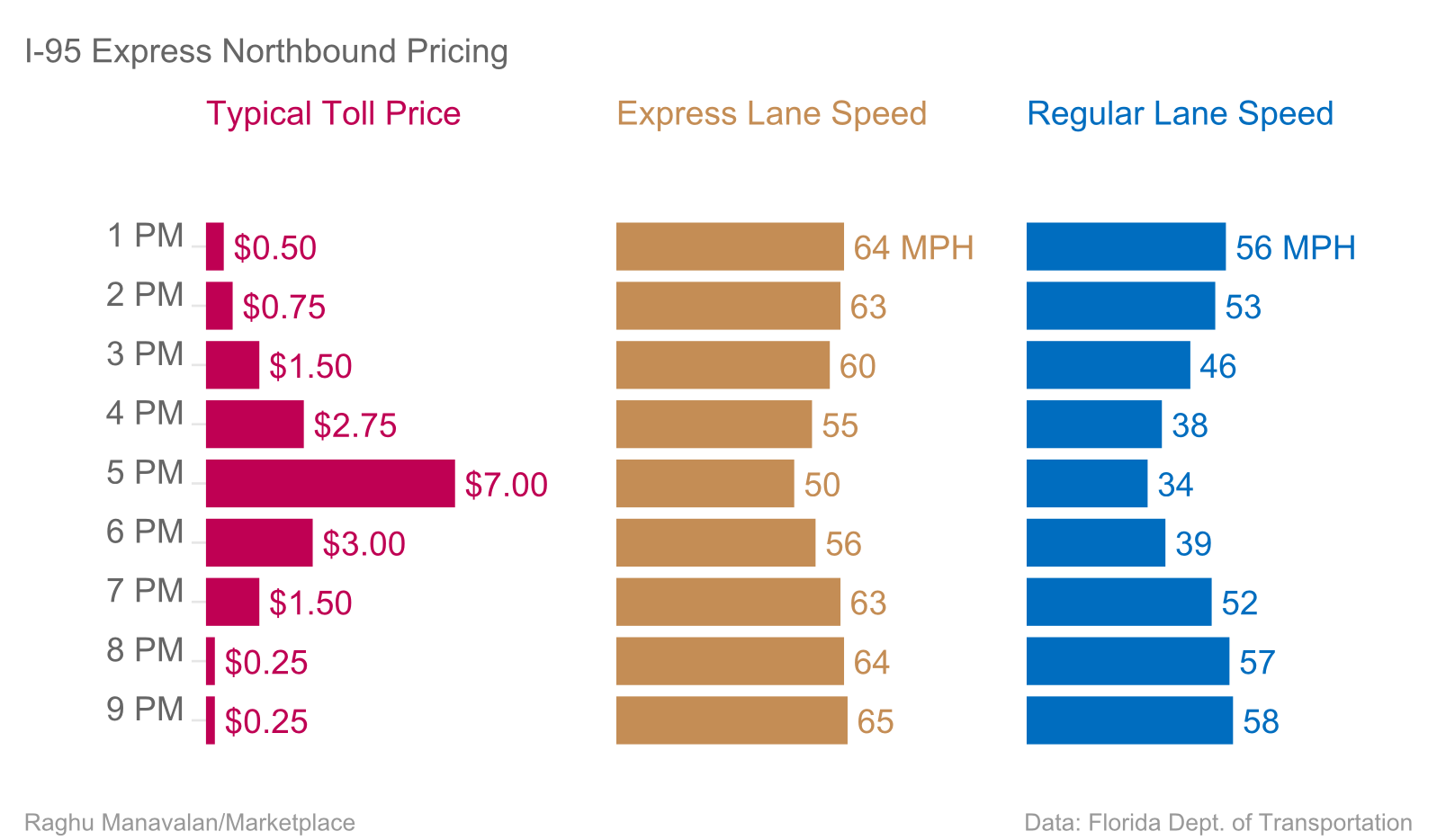American Public Media’s Marketplace is reporting on a developing problem facing transportation officials. In Florida, for example, they’re finding that efforts to keep the express toll lanes zipping along by raising the price to keep fewer people from using the high-occupancy toll lanes (HOT) isn’t working when it should.
The problem they’re finding in Florida, Marketplace says, is something that was discovered in Minnesota earlier: People are drawn to high prices.
“And that’s surprising,” said David Levinson a professor of civil engineering at University of Minnesota and a study author. “Our expectation was that when we raised the price, that fewer people would consume the good … which is what you typically find.”
He says you don’t normally think about driving on high-occupancy toll lanes as a prestige good, where people perceive more value as the price goes up.
On the other hand, Levinson says, maybe there is a real value. “So if you’re a ‘type-A’ person you might get some sort of psychological benefit from passing 20 other cars on your way to work. Even if by passing 20 cars you’ve only saved yourself a minute or two, you’re ahead in the race, so as a positional good you think it’s better.”
Mr. Levinson’s and Michael Janson’s study, called HOT or Not (get it?), didn’t suggest that the higher prices carried some sort of cachet, as the Marketplace report seemed to suggest at first blush.
Rather the study seemed to say the higher the price, the worse the penalty in the drivers’ mind for not paying it.
“Drivers likely view the price as an indication of time savings and congestion, suggesting higher prices provide greater time savings,” the study said.
On MnPASS roads, there’s no indication other than the price about how bad the congestion is in the non-HOT lanes. The higher the price, the worse drivers think the congestion is and the more they’re willing to pay to avoid it.
So what should these transportation officials in HOT states do if they really want to use pricing to control the demand for the HOT lanes? Show commuters the actual travel times instead of just the price of the HOT lane.
This graphic from Marketplace about the I-95 scenario in Florida is really fascinating.
People were willing to pay the most money to move at the slowest speed. And the gap in speeds between the HOT lanes and the congested lanes isn’t that great, at least for those with relatively short commutes.
Where do we see this in non-HOT lanes in the Twin Cities? On the I-35E stretch entering Saint Paul that’s posted at 45 mph instead of 55 mph. Every year the Legislature gets a bill to raise it; every year the Legislature either kills it or let’s it die. And yet, it remains a very emotional topic for drivers for the 5 1/2 miles or so of reduced speed. What’s really at stake?
At 45 mph, driving the stretch would take 7 minutes. At 55 mph, it would take 6 minutes. A minute isn’t a lot of time, and yet this is annually one of the more passionate arguments when it comes up.
Why? Because people perceive the value of going faster is greater than it probably actually is. As a commenter said on NewsCut a few days ago, “I just want the feeling I’m moving.”
And people are more than willing to pay a premium for it.
By the way, I haven’t yet seen this year’s version of the “raise the speed limit” bill. It’ll come, just as sure as there’s a spring in Minnesota

